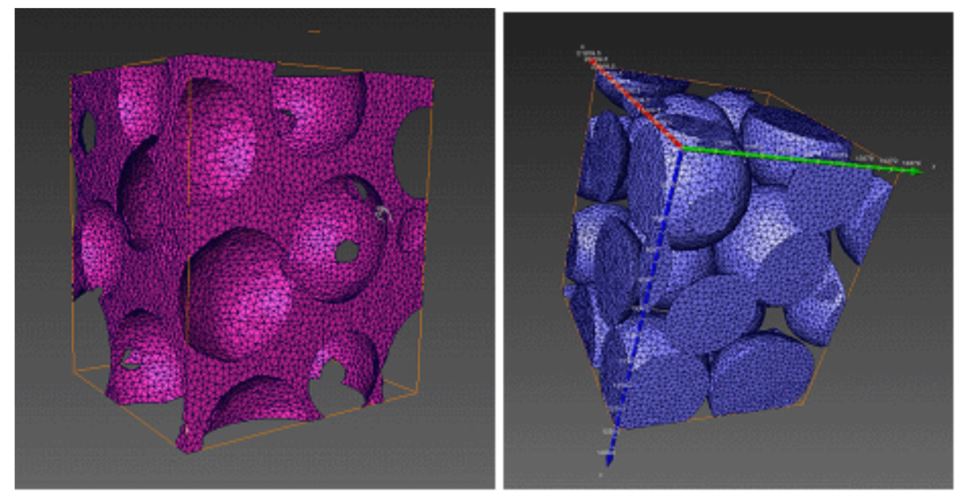Schoesser, B., Makhool, L., Kalender, C., Winkelmann, U., Thewes, M. (2017)
in: Book of Abstracts Interpore 9th International Conference on Porous Media & Annual Meeting, Rotterdam, Netherlands.
Abstract
In this study, numerical simulations are verified with laboratory tests to investigate the flow behavior of bentonite suspensions through the pore space of coarse media. The coarse media are provided by packed glass beads with diameters of 2mm and 600-850µm. The geometrical description of the pore space has been acquired by scanning different samples of the glass beads using µCT. By applying AVIZO software for image processing, a 3D network of the pore space is generated. Based on the 3D model the connected and unconnected pores are depicted. The definite size and shape of the “real” geometry is transferred in a generated mesh of the pore space (see Figure 1).
In a second step, the flow field is solved using finite volume method. It includes the generation of the mesh of the fluid region using ICEM and setting the boundary conditions. These exhibit the inlet and the outlet flux and the stationary walls. The open source software openFOAM is applied to solve transient, incompressible, laminar flow for non-Newtonian fluids.
Simulations of the flow in the definite pore space are conducted in several steps by increasing the complexity of the applied fluid model: at first, the flow of Newtonian fluid without yield stress is modelled followed by applying viscosity parameter to the characteristics of the fluid. Afterwards, the modelling of non-Newtonian fluid is performed by adding the yield point parameter and the non-linear relation between shear rate and yield stress. For modelling the bentonite suspension, in a first step the Bingham approach is used. In a next step, the more advanced Herschel-Bulkley model is applied. Here, numerical methods, such as ?nite volume in conjunction with computational implementation are utilized.
As a result of this simulation the pressure field in the porous medium is obtained. This is compared to the results gained from the laboratory experiments. The experiments are performed using the packed glass beads of diameters 2mm and 600-850µm in a cylinder. The fluids are injected through these beads in certain velocities meanwhile the pressure drop is measured at several positions within the flow area. Verification of simulation is conducted by comparing the values of velocity as a function of pressure gradient with the experimental values.

